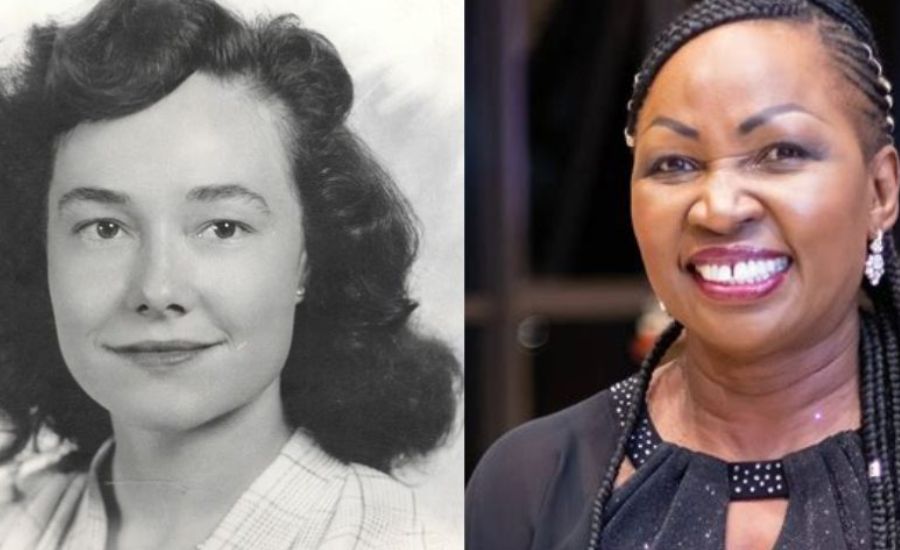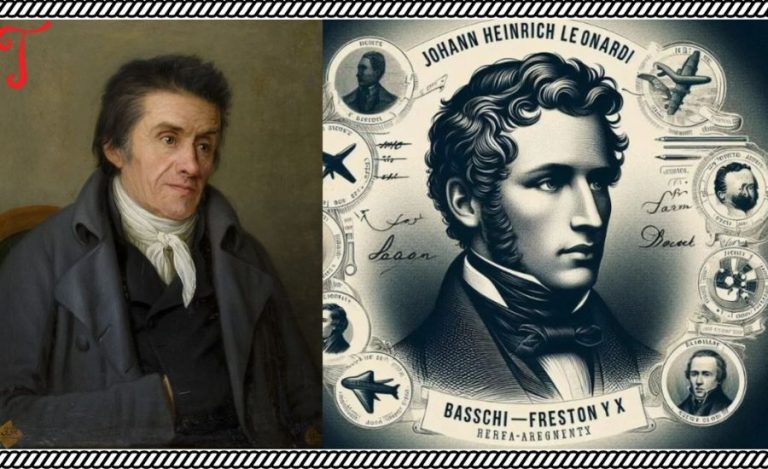Nellie Jo Turberville Highland Park Michigan, Education Reforms & More
Introduction to Nellie Jo Turberville Highland Park Michigan
Highland Park, Michigan, holds a rich history, with Nellie Jo Turberville’s life exemplifying community leadership. Turberville, a dedicated advocate for her hometown, played a crucial role in shaping Highland Park during its transformative years. Her journey reflected the city’s resilience and highlighted the impact of grassroots activism.
This article explores Turberville’s influence on Highland Park, emphasizing her efforts to improve the neighborhood. Through her leadership, she inspired residents to engage in local issues, demonstrating the power of collective action in solving problems. Her legacy underlines the significance of vision and perseverance in driving positive change and serves as a beacon of hope for community builders.
Turberville’s story is not only about her achievements but also the values she instilled. Her life reminds us of the enduring effects of passionate advocacy and the vital role of individual efforts in weaving together a brighter future for all.
Who Was Nellie Jo Turberville?
From Highland Park, Michigan, a city firmly established in the economic center of the United States, came Nellie Jo Turberville, a lady of electricity and solve. Known for her long-standing commitment to social justice and community development, Turberville played a pivotal role in the town throughout some of its most trying times.
Her engagement was characterized by a deep belief in the need for social and economic reforms that would benefit the neighborhood and a fervent determination to bringing her friends’ goals together. Turberville devoted his life to fostering understanding and bringing the community together around issues that prioritize justice and progress.
Through her administration, she encouraged commerce and suggested cooperation to the majority of the community’s residents, providing them with the confidence to actively participate in civic activities. Turbervilles data show that an unmarried individual may effectively guide a network. The cost of activism, perseverance, and the collective strength of individuals working together to bring about amazing change are all highlighted in this story. Even today, her efforts remain relevant, encouraging people to assume the role of network leader and influence actual commerce in their local communities.
Early Life and Education Journey
Nellie Jo Turberville was deeply influenced by her upbringing in Highland Park, Michigan, a city thriving in the midst of the automotive boom. This dynamic environment shaped her worldview, allowing her to witness firsthand the dual nature of rapid industrial expansion—both its opportunities and challenges.
As a student in local schools, Turberville distinguished herself with her keen intellect and strong sense of fairness. These traits laid the groundwork for her future as a dedicated community advocate. She became increasingly aware of the social issues affecting her neighborhood and was determined to address them head-on.
Her educational journey fueled her passion for justice and reform, igniting a desire to empower her fellow residents.With a keen awareness of the community, Turberville devoted his life to supporting programs that enhanced quality of life and advanced social justice. Her dedication to her neighborhood demonstrated a strong conviction in the effectiveness of grassroots movements and group effort. Turberville’s legacy goes on as a source of inspiration, showing how a person’s early experiences can ignite a lifetime commitment to having a significant impact on the lives of others.
Educational Programs and Youth Engagement

Education changed into one in every of Turberville’s most passionate interests, as she believed it held the important thing to breaking the cycle of poverty and empowering future generations. She labored tirelessly to enhance academic possibilities in Highland Park, advocating for stepped forward faculty investment and creating after-college applications that provided tutoring and mentorship. Her consciousness on teens engagement also extended to selling arts and cultural sports, which she considered as vital for fostering a experience of identity and pleasure among younger people. By inspiring teens to live worried of their community, Turberville helped cultivate a technology of destiny leaders committed to the city’s revitalization.
The Decline: Economic and Social Challenges
Highland Park’s decline began within the latter half of the 20th century when the car enterprise, once the town’s financial spine, started relocating operations somewhere else. The departure of those predominant manufacturers precipitated a sequence response, leading to tremendous activity losses, financial instability, and a shrinking population. The metropolis, which was an image of business fulfillment, discovered itself going through escalating poverty, crime, and concrete decay.
As groups left, the monetary downturn significantly impacted network infrastructure. Public offerings, consisting of schools and healthcare, saw funding cuts and deterioration, whilst deserted houses and commercial areas became commonplace points of interest. The monetary disaster also took a social toll, unraveling the as soon as tightly knit community. As citizens struggled with unemployment and dwindling resources, the city faced a profound shift in its identification and quality of existence.
Community Impact and Social Reforms
Nellie Jo Turberville’s impact on Highland Park went beyond typical community service; she advocated for comprehensive social reforms aimed at long-term sustainability. Recognizing that economic challenges stemmed from deep-rooted structural issues, Turberville sought to address these through policy changes and community programs. She played a key role in pushing for reforms in education, healthcare access, and housing, understanding that these areas were crucial to the city’s recovery. Her efforts helped to lay the groundwork for initiatives that provided essential services to low-income families and offered support for youth at risk.
Building Partnerships for Sustainable Change
Turberville understood that collaboration was essential for growing lasting effect. Her leadership style was marked by means of forming strategic partnerships with local corporations, non-profits, and government corporations to pool assets and information. This approach enabled the metropolis to launch initiatives consisting of job gala’s, vocational schooling facilities, and small commercial enterprise development programs that provided citizens with new employment pathways. Through those partnerships, she was capable of carry numerous stakeholders collectively, ensuring that the needs of the network had been met in a holistic way. Her potential to construct bridges among distinct sectors contributed drastically to the resilience of Highland Park.
Community Leader Nellie Jo Turberville in Highland Park, Michigan

As the landscape of Highland Park, Michigan, transformed with factory closures and economic challenges, Nellie Jo Turberville emerged as a symbol of resilience and hope for her community. During these turbulent times, her leadership shone brightly as she initiated various programs designed to uplift residents facing adversity.
Turberville’s vision extended beyond mere immediate assistance; she understood the necessity of creating sustainable change. By establishing educational initiatives and poverty alleviation programs, she aimed to address the root causes of economic hardship. One of her key focuses was the development of job training programs that equipped individuals with essential skills, ensuring they were prepared for the evolving job market.
Turberville aggressively promoted alliances with nearby companies in addition to these educational initiatives, opening doors for employment and community involvement. Her methodical approach to community development not only created the foundation for a more resilient Highland Park but also offered vital support during trying times. The lasting impact of Nellie Jo Turberville’s legacy serves as a constant reminder of the great potential for community transformation and individual empowerment toward a better future.
Highland Park’s Michigan: Rise and Fall
The tale of Highland Park offers a moving perspective on the ups and downs of industrial expansion and contraction. The city had a prosperous time in the past, drawing numerous workers and families in search of opportunities. It was once a thriving hub for the automotive industry. But when major manufacturers started to close, Highland Park encountered severe economic difficulties that resulted in a large loss of jobs and general suffering.
The collapse left many locals facing joblessness and running out of resources in a desolate environment, underscoring the pressing need for reform and rebirth. In addition to having an impact on livelihoods, the economic crisis also damaged the community’s infrastructure and spirit.
In response to these challenges, efforts for transformation emerged, as community leaders and residents alike recognized the importance of collaboration in fostering recovery. Reimagining Highland Park’s future now requires an emphasis on social assistance, education, and economic development initiatives. The city is at a turning point where tenacity and resolve can open a new chapter and serve as a reminder that, despite hardship, communities can come together to restore their vibrancy and promote development for future generations.
Nellie Jo Turberville’s Role in Highland Park’s Revival
Despite the city’s hardships, Nellie Jo Turberville remained steadfast in her efforts to revitalize Highland Park. She recognized that sustainable change would require more than just economic solutions; it needed active community involvement and a focus on education. Turberville spearheaded numerous urban renewal projects aimed at restoring civic pride and improving living standards. Her approach encouraged grassroots participation, empowering residents to take ownership of local revitalization efforts and work together to beautify neighborhoods and enhance services.
Turberville’s initiatives were grounded in her belief that informed and engaged citizens could drive meaningful change. Her leadership inspired hope and instilled a renewed sense of unity, setting the stage for broader social and economic improvements. Under her guidance, community programs focused on job training, education, and neighborhood cleanup began to lay the foundation for Highland Park’s gradual recovery.
Highland Park’s Rise to Prosperity
The early 20th century saw Highland Park rise to prominence as a result of the fast expansion of the automobile industry. The city grew into an industrial powerhouse as a result of its strategic position for major automakers, including the iconic Ford Motor Company and the groundbreaking Chrysler facility.
With an abundance of job opportunities, Highland Park attracted a growing workforce, leading to a population surge and significant economic development.
Public services around the city prospered during this affluent time. Thanks to generous funding for parks, schools, and recreational facilities, residents were able to enjoy a high level of living and a strong sense of community. Throughout the middle of the 20th century, Highland Park’s thriving business areas and spotless neighborhoods served as evidence of the wealth of the auto industry.
The golden age of the city enhanced social cohesion and the economy, making Highland Park an appealing destination for employment and residence. Its public areas and infrastructure reflected the affluence and optimism of the era, laying the groundwork for a thriving neighborhood. Even if there would soon be difficulties during this expansion phase, Highland Park’s early success is still a significant part of its historical legacy.
Is Highland Park, Michigan, a Good Place to Live?
Today, Highland Park embodies a complex mix of resilience and struggle. While socio-economic challenges persist, there are signs of hope and progress. Efforts led by committed leaders like Turberville have started to bear fruit, with new businesses emerging and educational reforms gaining traction. Though the city faces ongoing difficulties, the groundwork for renewal is visible, making Highland Park a place where potential and perseverance continue to shape the future.
Lessons from Nellie Jo Turberville’s Legacy

Nellie Jo Turberville’s life is a testament to the impact of resilience and dedicated leadership in overcoming adversity. Her work highlights the significance of local activism in driving meaningful change, demonstrating that even one determined person can mobilize a community toward a better future. Her legacy serves as a powerful reminder of the enduring influence that committed individuals can have on shaping society and revitalizing communities.
The Reduction: Financial and Social Difficulties
Public services, such as underfunded schools and congested infrastructure, have deteriorated as a result of the economic crisis. In these neighborhoods, once-thriving residences and businesses were abandoned, which added to the city’s demise.
Highland Park was once a bustling center of industrial prosperity, but it quickly encountered the hard realities of urban degradation, increased crime, and poverty.
The local economy suffered a devastating blow with the departure of major corporations. Underfunding of schools and congested infrastructure are just two examples of how public services have declined as a result of the economic crisis. The city’s downfall was exacerbated by the abandonment of once-thriving residences and businesses in these neighborhoods.
The impact was not only financial but also social. The tight-knit community that once thrived during Highland Park’s prosperous years began to unravel. The city’s cohesiveness was shattered by the loss of employment and possibilities, posing problems that went beyond the economy. The history of Highland Park serves as a poignant reminder of the enormous effects that industrial transformations can have on communities today, emphasizing the need for adaptability and tenacity in the face of these difficulties.
Conclusion
The story of Highland Park, Michigan, is one in all resilience, marked by each the heights of commercial prosperity and the depths of financial and social demanding situations. The metropolis’s adventure from being a flourishing automobile hub to facing extreme monetary decline serves as a poignant reminder of the effect that business modifications can have on groups. Leaders like Nellie Jo Turberville played a pivotal position in navigating those turbulent times, bringing desire and tangible development through grassroots activism and network-centered initiatives.
Turberville’s willpower to social reform, teenagers training, and financial development helped lay the groundwork for Highland Park’s ongoing healing. Her efforts established the electricity of nearby activism in addressing structural problems, and her legacy maintains to encourage the ones dedicated to revitalizing their groups. While Highland Park still faces tremendous socio-economic difficulties, the city’s story reflects the long-lasting spirit of its residents who continue to strive for a brighter future.
FAQs
- Who was Nellie Jo Turberville?
- Nellie Jo Turberville was a prominent community leader in Highland Park, Michigan, known for her dedication to social justice and community development.
- What contributions did Nellie Jo Turberville make to Highland Park?
- Turberville initiated programs focused on education, poverty alleviation, and job training, and fostered partnerships with local businesses to create job opportunities and community involvement.
- How did Nellie Jo Turberville help the community?
- She addressed economic hardships by developing job training programs, promoting social and economic reforms, and encouraging community collaboration.
- What was Highland Park’s significance in the early 20th century?
- Highland Park was a thriving hub of the automotive industry, primarily driven by the success of the Ford Motor Company and Chrysler, leading to economic growth and flourishing public services.
- What caused Highland Park’s decline?
- The city’s decline occurred when major factories closed, leading to significant job loss, population decline, and economic hardship, resulting in deteriorating public services and an increase in poverty and crime.
- What efforts were made for Highland Park’s recovery?
- Community leaders and residents recognized the need for collaboration, leading to efforts focused on social assistance, education, and economic development initiatives to transform the city.
- What was Highland Park like during its peak?
- During its peak, Highland Park experienced economic prosperity, with flourishing public services such as parks, schools, and recreational facilities, and a strong sense of community.
- How did the decline affect public services in Highland Park?
- The decline resulted in underfunded schools, congested infrastructure, abandoned residences, and a general deterioration of public services.
Read More Information About Biography At discoverparadox






